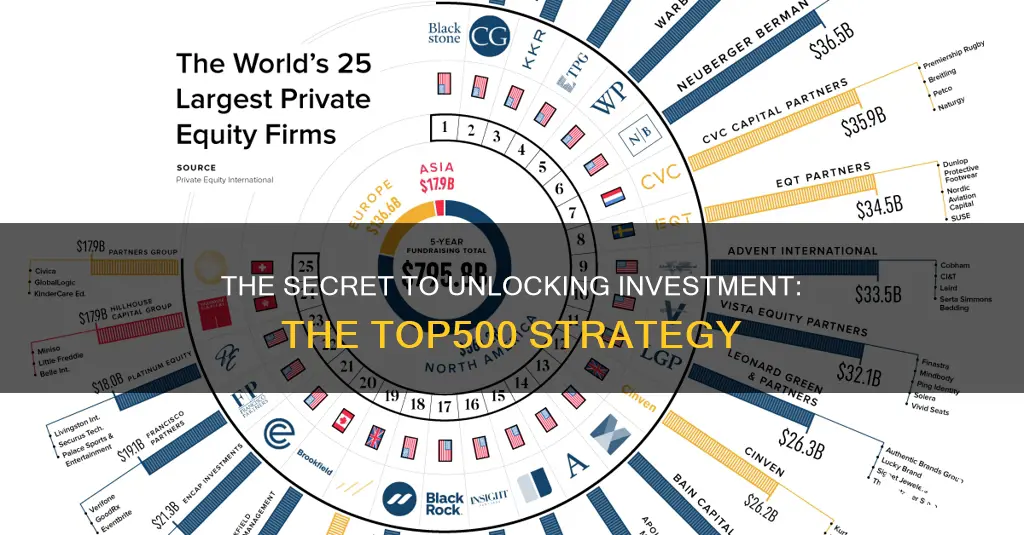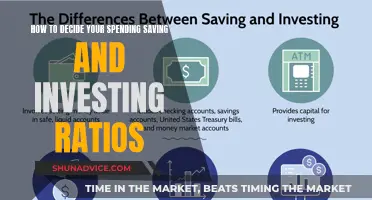
The S&P 500 index fund is an excellent investment choice for those seeking higher returns than traditional banking products or bonds. It offers broad, diversified exposure to the stock market and is ideal for investors who want to match the performance of the broader market without owning individual stocks. The S&P 500 index comprises 500 of the largest and most successful American companies, providing investors with access to some of the most profitable businesses in the United States.
By investing in an S&P 500 index fund, you can expect returns that closely mirror the performance of the index itself, historically around 9% to 10% annually. This investment option is particularly attractive due to its low expense ratios, immediate diversification, and the ability to invest in a wide range of industries.
Additionally, S&P 500 index funds are passively managed, resulting in lower investment management fees compared to actively managed funds. This makes them a popular choice for investors seeking easy portfolio diversification and a lower-risk approach to investing in stocks.
When considering investment options, it's important to evaluate your risk tolerance, time horizon, knowledge of investing, financial situation, and the amount you can invest. S&P 500 index funds offer a balanced approach, providing the potential for long-term growth while reducing the risk associated with individual stock investments.
| Characteristics | Values |
|---|---|
| Name | SPDR S&P 500 ETF |
| Management | State Street Global Advisors |
| Assets | $168 billion |
| Shares exchanged over three months | 149 million |
| Top holding | Apple |
| Top ten holdings | Apple, Microsoft, Exxon Mobil, Pfizer |
What You'll Learn

Low-cost structure and no minimums on initial investment
Low-cost investment funds are a great way to invest in a diversified fund without a high price tag. These funds offer a basket of securities for a very minimal fee.
The Fidelity 500 Index Fund (FXAIX) is a great example of a low-cost structure with no minimums on the initial investment. FXAIX is cheaper than several similar S&P 500 ETFs, making it one of the most cost-effective ways to invest in large US stocks. This fund has a very low expense ratio of 0.015% and, like many Fidelity funds, has no minimum required investment or transaction fees.
Another example of a low-cost fund with no minimum investment is the Vanguard Total Stock Market ETF (VTI). This fund has an expense ratio of 0.03% and a portfolio turnover rate of 2.2%. While this fund does have a minimum investment of $3,000, it is still a very accessible option for investors.
The Schwab S&P 500 Index Fund (SWPPX) is another great option for investors seeking a low-cost fund with no minimum investment. This fund is benchmarked to the S&P 500 and has a very low cost structure, making it one of the cheapest and most established S&P 500 index funds on the market.
For investors looking for a truly diversified fund, the Invesco Equally-Weighted S&P 500 (VADAX) is a great option. This fund has a higher expense ratio than the other S&P 500 index funds, but it offers equal weight to all 500 components of the index. This means that your investment is spread evenly across all 500 stocks, rather than weighted by market value.
These low-cost funds with no minimum investments are a great way for investors to get started in the stock market and build a diversified portfolio without a large amount of capital.
Penny Stocks: Why the Risk?
You may want to see also

No fees for active Fidelity Investments account holders
Fidelity Investments is one of the most well-rounded brokerages available today. The company offers no commissions on stock or ETF trades and a selection of no-expense-ratio index funds suited to both beginner and active investors.
Fidelity offers $0 trading commissions, a selection of more than 3,300 no-transaction-fee mutual funds, top-notch research tools, and a mobile platform. Its zero-fee index funds and strong customer service reputation are just icing on the cake.
Fidelity's brokerage accounts shine due to their well-rounded offering. Fidelity Investments offers $0 trading commissions, no account fees that can erode returns, a swath of research offerings, and an easy-to-use platform that advanced traders can customize.
Fidelity has a strong reputation for its mutual funds. The broker scores well across every funds category with a large selection of no-transaction-fee funds, including its Fidelity Zero index funds, which have no expense ratio and minimum investment requirement. These investor-friendly practices save customers a lot of money.
Fidelity also offers a customized mobile app experience for the Fidelity Youth Account, an investment account designed for teenagers (ages 13 to 17). This account allows a parent or guardian to monitor the teenager's activity and offers access to stocks and ETFs, including fractional shares. Teenage account holders can also invest in select Fidelity mutual funds (including Fidelity ZERO funds, which have no expense ratio).
Fidelity Flex 500 Index (FDFIX) is a fund that is completely free of charge to investors. The only catch is that you can only buy into this S&P 500 index fund if you're an active Fidelity Investments account holder. This may not be much of a hurdle for many investors, though, considering Fidelity currently boasts more than $4 trillion in assets under management.
Fidelity's account minimum is $0, which has become the industry standard for brokers, as many no longer have a required minimum to open or maintain an account. Some investment choices, such as mutual funds, may require a minimum initial investment.
Fidelity has eliminated nearly all account fees, including the transfer and account closure fees commonly charged by brokers.
Luna: The People's Crypto
You may want to see also

Low expense ratio and no investment minimum
A low expense ratio and no investment minimum are two factors that can make an investment fund more attractive to investors. Here are some paragraphs explaining how these factors can bring investment in the top 500:
Low Expense Ratio
A low expense ratio is beneficial for investors as it means they are paying less in fees to the investment company. The expense ratio represents the fund's management fees and operating costs, and it is usually listed on the fund's prospectus. Index funds, which are passively managed, tend to have lower expense ratios than actively managed funds. Actively managed funds require more research and analysis, and the assets in them are constantly monitored and changed, which increases costs.
Index funds, such as those tracking the S&P 500, have become increasingly popular due to their low expense ratios. These funds buy and hold a representative sample of the securities in the target index and only make changes when the index itself changes. As a result, they tend to have below-average expense ratios.
For example, the Fidelity ZERO Large Cap Index Fund (FNILX) has an expense ratio of 0%, meaning investors pay nothing annually for every $10,000 invested. The Vanguard S&P 500 ETF (VOO) has an expense ratio of 0.03%, which means investors pay $3 annually for every $10,000 invested.
No Investment Minimum
Funds with no investment minimum also make investing more accessible, especially for those who are just starting or who do not have a large amount of money to invest. This allows investors to get started with investing without having to meet a minimum threshold.
For instance, the Fidelity ZERO Large Cap Index Fund (FNILX) has no minimum investment, so anyone can invest in this fund regardless of the amount they have to invest. Similarly, the Fidelity Flex 500 Index (FDFIX) is another fund with no minimum investment, but it is only available to active Fidelity Investments account holders.
By offering low expense ratios and no investment minimums, investment companies can attract more investors, especially those who are cost-conscious or who are just beginning their investment journey. These factors can bring investment into the top 500 by making the funds more appealing and accessible to a wider range of investors.
Investing: A New National Pastime?
You may want to see also

High assets and a strong record
The SPDR S&P 500 ETF (SPY) is the oldest and most successful ETF globally, tracking 500 of the most prominent companies in the US across various sectors. With $168 billion in assets and 149 million shares exchanged on average over three months, it is highly established and liquid. State Street Global Advisors, the world's second-largest asset manager, manages the fund.
The top ten holdings of the SPY include technology companies like Apple and Microsoft, energy companies like Exxon Mobil, and the pharmaceutical company Pfizer. The fund is highly diversified, with the top holding (Apple) weighing less than 4% of the total fund and the top ten at only 16.94%. This means that if any company experiences trouble, it will not significantly affect the fund.
The SPY will always contain the top 500 US companies. If a company grows and becomes more successful, it will eventually replace another in the S&P 500. This means you are always invested in the best 500 companies, and the index is efficient and emotionless.
The SPY has closely followed the S&P 500's return, and if you had invested $10,000 in the fund ten years ago, it would be worth approximately $16,800 today, even considering the Global Financial Crisis of 2008/09. A $10,000 investment in 2009 would be worth even more, with a return of 180%.
The S&P 500 has a solid history of rebounds, and over the long term, it has always recovered. A 20-year investment has never resulted in a loss. The index experienced a bear market in 2022, declining by more than 20% from its peak, but it rallied by 24% in 2023 and soared past previous records.
S&P 500 index funds are ideal for investors seeking higher returns than traditional banking products or bonds and are an excellent choice for beginners. They are also a good option for those who want to achieve broad, diversified exposure to the stock market and can stay invested for at least three to five years.
These funds are one of the less risky ways to invest in stocks, as they are highly diversified and made up of the market's top companies. While they are not insured by the government, so you can lose money based on fluctuations in value, the index has done well over time.
You can purchase an S&P 500 index fund at any broker that allows you to trade ETFs or mutual funds. ETFs are typically commission-free, so you won't pay any extra charges, whereas mutual funds may charge a commission and require a minimum purchase.
California Teachers' Retirement Investments: Unveiling the Portfolio
You may want to see also

Equal weight in the 500 components
The S&P 500 Equal Weight Index (EWI) is the equal-weight version of the widely-used S&P 500. The index includes the same constituents as the S&P 500, but each company is allocated a fixed weight, or 0.2% of the index total, at each quarterly rebalance. This is in contrast to the market-cap-weighted S&P 500 Index (SPX), where the weight of a company in the index is equal to the market cap of that company divided by the total market cap of all the companies in the index.
Equal-weight ETFs offer more protection if a large sector experiences a downturn, and due to the equal weighting, losses in small sectors underperforming can be offset more than they would in a market-weight ETF. The equal weighting also eliminates the distortion of the mega-cap components and significantly changes several sector weightings. For example, the industrials sector has the largest increase in weighting, jumping from 9% on the SPX to nearly 16% on the SPW, while the technology sector drops from around 30% to only 13%.
The S&P 500 can be sliced in two ways: by market cap, which is the standard manner, or by equal weight, which is an additional way to view the index. When viewing the index by market cap, certain companies make up a greater percentage of the index's weight, and the performance of the index is influenced by the performance of these large companies. On the other hand, with an equal-weight index, every company is treated equally, and performance does not depend on a few big names. However, this would increase the volatility of an equal-weight index, as smaller companies generally have higher volatility, and this would be seen in the index through their equal weighting with the much larger companies. Depending on the goals of the investor and their risk tolerance, one index may serve a better purpose than the other.
Retirement Strategy: Picking the Right Investments to Liquidate
You may want to see also
Frequently asked questions
An S&P 500 index fund is based on about 500 of the largest American companies, meaning it comprises many of the most successful companies in the world. For example, Amazon and Berkshire Hathaway are two of the most prominent member companies in the index.
An S&P 500 index fund is an excellent choice for beginning investors because it provides broad, diversified exposure to the stock market. It is also one of the less risky ways to invest in stocks, as it is made up of the market's top companies and is highly diversified.
While an S&P 500 index fund is generally less risky than investing in individual stocks, it is still subject to market volatility. Additionally, it is not insured by the government, so there is a risk of losing money based on fluctuations in value.
When choosing an S&P 500 index fund, look for one with low fees and no minimum investment requirement. This will help you get started with investing without a large upfront cost.
Some alternative investments to an S&P 500 index fund include high-yield savings accounts, long-term certificates of deposit (CDs), long-term corporate bond funds, dividend stock funds, and value stock funds. These options offer varying levels of risk and return, so be sure to consider your financial goals and risk tolerance before investing.







